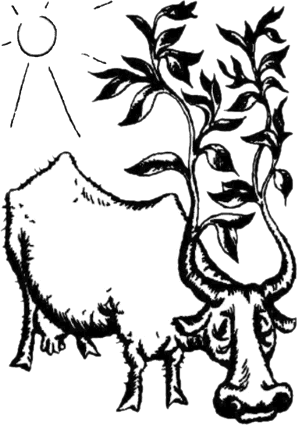107Stories About ChemistryINDEX |
70.
Red and Green
They are both very complex organic substances. Their structural formulas would take up a whole page of our book. Both of them are complex compounds, and unusual ones: their only metallic atom loses itself, as it were, at the centre of an intricate framework consisting of several cycles. Chemists call such compounds chelate compounds. By �they� we meant haemoglobin and chlorophyll. The red colour of the blood and the green colour of plants are due to them. These two substances hold the keys to all animate things on Earth.  The �core� of haemoglobin is an iron atom. The blood of different animals contains different haemoglobins, but they all have the same basic structure. The blood of a man contains about 750 grams of haemoglobin. Haemoglobin transfers oxygen from the respiratory organs to the tissues of the organism. Chlorophyll has almost the same structure. The difference is that metal atom in it is a magnesium atom. The vital function of chlorophyll is very responsible and complex. It enables the plant to assimilate carbon dioxide from the atmosphere Chemists are just beginning to learn the essentials of the mechanism of operation of haemoglobin and chlorophyll. Evidently, the central metal atoms, those of iron and magnesium, play a very important part. But it appears that nature�s imagination is very lavish. Iron and magnesium are by no means the only metals that can get inside the porphinic skeleton (such is the name of the organic framework common to haemoglobin and chlorophyll). The metallic �core� may also be copper, manganese or vanadium. There are creatures on Earth which have blue blood. These are some species of mollusks. The haemoglobin of their blood contains copper instead of iron. See what remarkable exhibits you can find in our chemical museum! |





